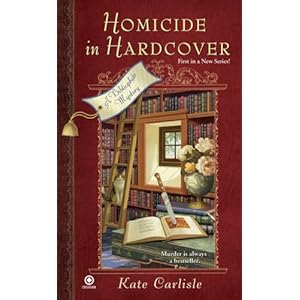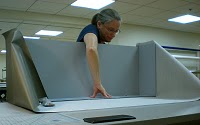 The Herald-Sun, recently featured Conservation in an article titled “Conservators Give New Life to Old Books.”
The Herald-Sun, recently featured Conservation in an article titled “Conservators Give New Life to Old Books.”
The gorgeous book on Erin Hammeke’s table is 21 by 14 inches, 3 inches thick, with gold tulle and white vellum binding. It dates from the mid-17th century.
An atlas from the Dutch publisher Blaeu, it has gloriously vivid maps of the British isles. It also has a number of tears, some discolorations and maybe even some mold. It’s Hammeke’s job to repair and fix it all.
“[The repairs] are pretty straightforward,” Hammeke said the other day as she delicately worked on a tear. “You mend it with Japanese tissue and research paste. It’s transparent, and flexible. You just have to test all the colors to see if they are water soluble.”
Hammeke is one of five remarkably skilled technicians working in the conservation department of Duke University’s Perkins Library. They are responsible for keeping the library’s 6 million books and millions of other items in working condition for both current and future users, and for rehabilitating works that have suffered from decay or in some cases, disaster.
Read more: The Herald-Sun – Conservators give new life to old books







 Foundation Award Will Expand Department
Foundation Award Will Expand Department

 Books
Books National Treasure
National Treasure
